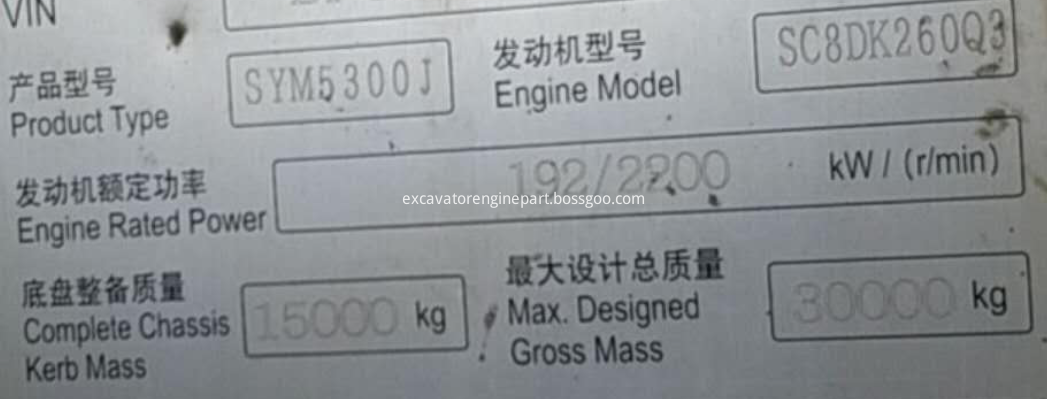1. Explosion safety distance After the explosive explodes in the rock mass, within a certain distance from the explosion source, the rock mass generates elastic shock waves, which is a blasting earthquake. The seismic intensity of blasting operations is mainly related to the amount of explosives, the source distance, the rock characteristics, the blasting conditions and methods, and the geological and topographic conditions. The Blasting Safety Regulations stipulates that “the blasting seismic safety of general buildings and structures should meet the requirements of safe vibration speed†and stipulates the control standard for the vibration velocity of the ground mass of the building (structure). 2. Safety distance of blasting air shock wave The safety distance of the air shock wave is mainly determined according to the following aspects: the safety distance to the ground building, the calculation and control standard of the air shock wave overpressure value, the blasting noise, the direction effect of the air shock wave and the atmospheric effect. The main methods for controlling air shock waves are: (1) Avoid exposed blasting, especially in residential areas. The detonating cord should be buried 20em or more. The delay between blastholes should not be too long, so as to prevent the front row from being turned into a bare blast. (2) Ensure the quality of the blockage, especially the first row of blastholes. If there is a large backlash on the face of the face, sufficient clogging length must be ensured. The water hole should be prevented from floating in the mud. (3) Take measures to consider geological anomalies. For example, faults, open cracks should be blocked at intervals, and caves and large cracks should avoid excessive charge. (4) Consider avoiding beam formation in the design. (5) In the underground mine roadway, structures such as obstacles, blocking walls, and enlarged rooms can be used to reduce the air shock wave of the roadway. 3. The safety distance of individual gravel scattering When blasting in the open air, some rocks scatter far away, endangering people, animals and buildings. The flying stone accident exceeds 1/4 of the total number of blasting accidents and must be strictly implemented in design and construction: (1) The design is reasonable, the measurement acceptance is strict, and the single consumption is avoided, which is the basic work for controlling the damage of flying stones; (2) Carefully treat geological structures such as faults, weak zones, open fissures, joint development joints, caves, goafs, and overburdens, and take measures such as blocking the gap, adjusting the dose, and avoiding excessive charges; (3) to ensure the quality of the blockage, not only to ensure the length of the blockage, but also to ensure that the blockage is dense; (4) When multiple rows of blasting, it is necessary to select a reasonable delay time to prevent the size and direction of the rear row from being out of control due to the front row of guns (backlash); (5) City blasting should be well protected. 4. Safe distance from electric detonation The safe distance of power detonation mainly considers the safety distance between the explosion zone and the high-voltage line, radio station and TV station. 5. Explosion safety distance of harmful gas diffusion The harmful gases of blasting mainly include CO, NO, NO2, N2O5, SO2, H2S, NH3, etc., which can cause asphyxiation and blood poisoning. Samples must be monitored after extensive blasting. The concentration of harmful gases below the allowable level can be used for downhole operations.
Sany 25T Crane Truck fittiong on ShangchaiEngine, This Engine Model is Shangchai SC8DK260Q3 made in Shanghai China , This engine is useful for Sany, Zoomlion, XCMG Heavy Equipment . The Sanyi equipment model is SYM5300JQZ (STC250),
Sany 30T Crane Truck Max Rated Lifting Capacity is 25T, Working Radius is 3m,
We need his VIN Number and factory number to check from our professional system, looking for correct number and quoted at the first time . that is very import for us.
Nameplate of Sany 25T Crane Truck With Shangchai SC8DK260Q3 Engine
Sany Truck Crane Parts,Shangchai Engine Fuel Injector,Sany 25T Crane Truck Parts Jining Kunpeng Construction Machinery Equipment Co., Ltd , https://www.excavatorenginepart.com

Mine blasting should maintain a safe distance
When blasting, blasting earthquakes, air shock waves, debris scattering and harmful gases are inevitable, thus endangering the safety of personnel, equipment, buildings and wells in the vicinity of the explosion area. Therefore, the blasting design must determine the scope of the blasting hazard and specify the safety distance. There are mainly the following aspects: